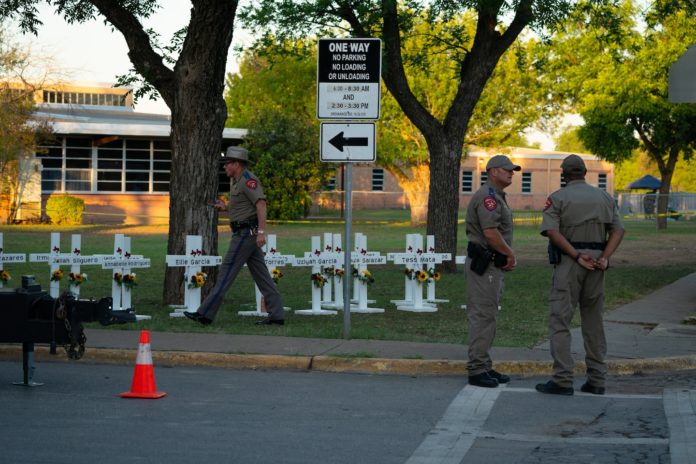
The surge in school shootings was stark: There were 93 incidents with casualties at public and private schools in 2020-21, compared to 23 in the 2000-01 school year. The record year included 43 incidents with deaths and 50 with injuries only.
The report uses a broad definition of shootings, including instances when guns were fired or brandished on school property, or when a bullet struck school grounds for any reason and regardless of whether students were present.
Ron Avi Astor, a professor at the University of California at Los Angeles, welcomed the broader definition, saying the report reflected a fuller picture, at a time when the 19 children and two teachers killed by a gunman at Robb Elementary School in Uvalde, Tex., remains close in mind. “If someone brings a gun to school and shoots it, that’s really traumatic,” Astor said. “It’s obviously more traumatic if somebody dies or is injured but the fear that that causes to all of the kids in school and all of the teachers goes far beyond the people who were hit.”
At the same time, some pointed out that schools are by far one of the safest places around for young people, who are more likely to be shot outside of school than inside.
“The increase in shootings in schools is likely a consequence of an overall increase in gun violence and not specific to schools,” said Dewey Cornell, a professor of education at the University of Virginia. “However, most schools will never have a shooting, and their main problems will be fighting and bullying.”
Students ages 12 to 18 did not express great fear about their own schools according to the NCES report.
Less than 5 percent were afraid of harm or an attack during the school year, according to 2019 data the report highlighted. And the rate of nonfatal crime — including theft, robbery, rape and various types of assault — declined from 51 victimizations per 1,000 students in 2009 to 30 per 1,000 in 2019.
It was hard to square the positive trends with the rise in shootings, said Annette Anderson, deputy director of the Johns Hopkins Center for Safe and Healthy Schools. “It’s a good start but I certainly would have liked to have a deeper dive on some of this,” she said.
Teacher difficulties with students increased in the last decade. Schools reporting verbal abuse of teachers at least once a week jumped to about 10 percent in the 2019-2020 school year, from about 5 percent a decade earlier. Similarly, schools reporting acts of disrespect for teachers rose to 15 percent in 2019-20, from 9 percent in 2009-10.
The percentage of public schools reporting cyberbullying at least once a week doubled in 2019-20 to 16 percent, from 8 percent in the 2009-10 school year, the report said.
Amanda Nickerson, a professor of school psychology at the University at Buffalo’s Graduate School of Education, did not attribute the rise in cyberbullying to the pandemic. “Part of that has to do with technology,” she said. “Kids are spending so much more time on computers, on cellphones.”
Twenty-seven percent of gay, lesbian or bisexual students in grades 9 to 12 reported being targeted by electronic bullying during the previous 12 months, compared to 19 percent of students unsure about their sexual identity and 14 percent of heterosexual students, according to 2019 data from the Centers for Disease Control and Prevention’s Youth Risk Behavior Surveillance System. Students were not asked if they identified as transgender.
Especially notable as the pandemic continues: Just 55 percent of public schools offered mental health assessments in 2019-20 and only 42 percent offer treatment. Stephanie Fredrick, an assistant professor who also teaches at the University at Buffalo’s Graduate School of Education, attributes that primarily to “inadequate funding or access to licensed professionals.”








